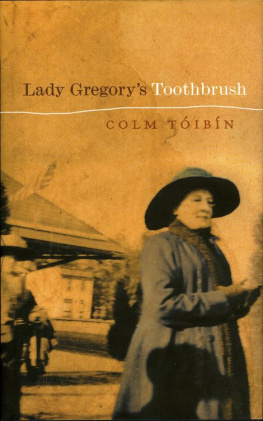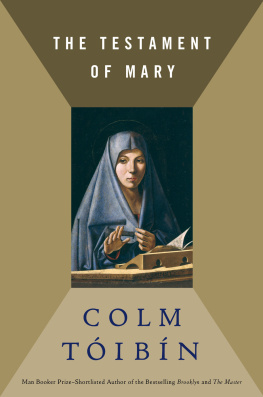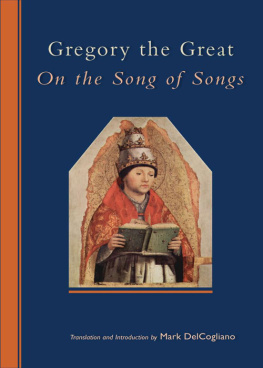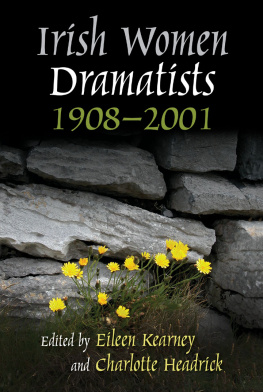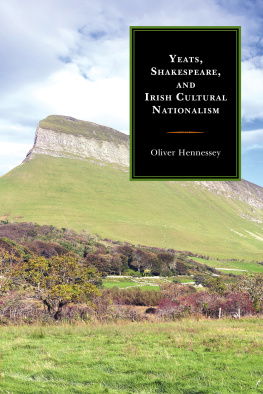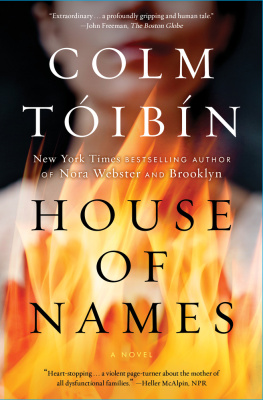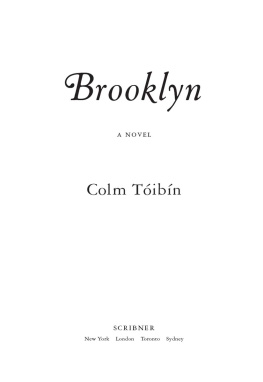I n 1933, a year after her death, in his book The Winding Stair and Other Poems, Yeats published his two great poems about Lady Gregory. He described her old age in Coole Park and Ballylee, 1931:
Sound of a stick upon the floor, a sound
From somebody that toils from chair to chair;
Beloved books that famous hands have bound,
Old marble heads, old pictures everywhere;
Great rooms where travelled men and children found
Content or joy; a last inheritor
Where none has reigned that lacked a name and fame
Or out of folly into folly came.
In Coole Park, 1929 he contemplated Cooles legacy and the legacy of his old friend:
They came like swallows and like swallows went,
And yet a womans powerful character
Could keep a swallow to its first intent;
And half a dozen in formation there,
That seemed to whirl upon a compass-point,
Found certainty upon the dreaming air,
The intellectual sweetness of those lines
That cut through time or cross it withershins.
The house is indeed gone, but there is no shapeless mound, there are no nettles. Coole did not meet the fate of other such houses in the period between 1918 and 1924. It was not burned; it was not attacked by the locals. It was sold to the Forestry Commission of the new Irish state, and in turn, after the old womans death in 1932, it was sold to a local builder who demolished it. The site where it stood is now cemented over. But the famous tree where the famous carved their initials is still there, and it is still possible to make out the letters, from WBY and JBY to JMS and SOC and AE to GBS and, indeed, some others, less famous, both locals and visitors.
The house where Augusta Gregory was born, Roxborough , just seven miles away, was burned down in the Civil War. Soon after the fire, on 8 October 1924, she went to look at it: The house, the ruin is very sad, she wrote in her journal, just the walls standing, blackened, and all the long yards silent, all the many buildings, dairy, laundry, cowhouses, coach houses, stables, kennels, smithy, sawmill and carpenters workshop empty, some of the roofs falling in. This is a sad day to the whole of us, Sean OCasey wrote to her. The ruins of all these lovely houses constitute a desolate monument of shame to Irish humanity. The estate Lady Gregorys family had run for many generations was divided into one hundred and twenty smallholdings , each, as one of her early biographers noted, with its own neat grey box of a house.
S he was born Augusta Persse in 1852, the youngest girl in a large family followed by four boys. In 1914, when George Moore in his autobiography attempted to suggest that she was an ardent soul gatherer in the days gone by but abandoned missionary work when she married, she vehemently denied this in a letter to his publisher. My mother and my two eldest sisters, she wrote, thought it right to point out what they believed to be the different teaching of the Bible to that of the Catholic church to any Catholics who would listen. They made no secret of this proselytism which was much mixed up with benevolence and charity in those days, and my sister, Mrs Shawe - Taylor , especially, worked ardently for its accomplishment I myself, the youngest, shrank from any effort to shake or change the faith of others.
She was brought up in a strict and rigid Protestantism with much Bible-reading and devotion to duty. Her mother held strong views on what or who was unsuitable for her daughters. This included the reading of novels, and extended to John Lane, whom her sister Adelaide eventually married, and her cousin Standish Hayes OGrady, the distinguished translator from the Irish, whom her mother, believing that cousins should not marry, banned from the house.
Lady Gregorys sisters were taller than her and had greater accomplishments in the art of finding a suitable partner. Augusta was considered the plain one, destined to be the carer, the spinster, whose type was depicted in A Drama in Muslin, George Moores novel of Anglo-Irish decay set ten years later. In 1879, however, while accompanying her mother and her brother, who was ill, to Nice, she renewed her acquaintance with their neighbour Sir William Gregory, a widower, who owned Coole Park. He was thirty-five years older than her, he had been a member of parliament for both Dublin and Galway and had also been Governor of Ceylon. Unlike her own family, he did not farm his Irish estate or live fully on its proceeds. He lived mainly in London, where he was a Trustee of the National Gallery. He was interested in books and paintings and, when he came to Ireland, he gave her the run of his library at Coole. She read Roderick Hudson under his auspices , and Middlemarch. In 1880 she married him.
The house he took her to, and the life he gave her in their twelve years of marriage, and indeed his own connections and history, offered her a rich set of associations. At school in Harrow, he had sat beside Anthony Trollope. He was a big boy, Sir William Gregory wrote in the Autobiography which Lady Gregory edited after his death, older than the rest of the form, and without exception the most slovenly and dirty boy I ever met. He was not only slovenly in person and in dress, but his work was equally dirty These peculiarities created a great prejudice against him and the poor fellow was generally avoided He gave no sign of promise whatsoever, was always in the lowest part of the form, and was regarded by masters and by boys as an incorrigible dunce.
In the early 1840s, when Trollope was working for the Post Office in the Irish midlands forty miles from Coole, he renewed his acquaintance with Gregory and was a guest in the house. At twenty-five, Gregory had become an M.P. and was a great favourite among the political hostesses in London and indeed, for some time, was a protg of Prime Minister Peel himself. As Gregorys guest in Coole, Victoria Glendinning has written, Trollope listened to the social and political gossip and did not forget it It was the best possible fodder for a novelist It was the politics and the sexual scandals of the 1840s, when he knew almost no one, which were to be the starting-points for his fiction long after he left Ireland.

William Gregory introduced Trollope to many of the leading writers and politicians. Trollope repaid the compliment by using aspects of Gregory, his popularity and his promise in the London of those years, in the creation of the character of Phineas Finn. In 1875, when Gregory, to his own disappointment, had reached the pinnacle of his career as Governor of Ceylon, Trollope stayed with him for two weeks.
Despite the birth of their only child, Robert, in 1881, Sir William Gregory and his young wife spent a great deal of time in the 1880s travelling. They left their son at home, and this caused her much pain. Within a short time of her marriage she met Henry James in Rome, and later, in London , Robert Browning, Tennyson, James Russell Lowell, Mark Twain and many other writers and politicians and hostesses who were in Sir Williams circle. Her accounts of those years are observant and wry. I sat next to Henry James, she wrote, and being in the middle of reading The Portrait of a Lady, asked why he had let Isabel marry that odious husband Osmond. He said she was bound to do something foolish, and I said yes with all that money. But without it, he said, where would have been the story? Besides, it is delightful for a poor man being able to bestow large fortunes on his heroines.

